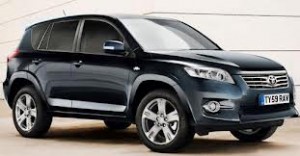3 Steps to Choosing a Used Car
 With hundreds of different makes and models available, choosing a used car can be tough. Do you buy from a private seller or do you head to your local dealer? Do you buy a small, sporty hatchback or a large family estate? And, what do you want to spend?
With hundreds of different makes and models available, choosing a used car can be tough. Do you buy from a private seller or do you head to your local dealer? Do you buy a small, sporty hatchback or a large family estate? And, what do you want to spend?
Here’s a simple three step guide to choosing a used car.
Establish a budget
Before you start searching for your next used car, it’s important that you work out what you can afford to spend. Many car dealers will attempt to sell you a car that’s more expensive than the one you were originally looking at, so you need to be very clear of your budget and prepared to stick to it.
When considering a budget, make sure you take all the possible costs into account. These include:
- The cost of the used car including VAT
- Any interest costs if you are buying the car using a finance plan
- Extended warranty costs
You should also consider your ongoing budget for the car. For example, how much will the insurance cost? What is the fuel economy like and how much will it cost you to run? And, what car tax band is the vehicle in and how much road fund licence will you have to pay?
Finally, establish how much your car is likely to cost for servicing, maintenance and repair. A nice used executive car may be affordable, but tyres and brake pads may cost twice as much to replace as a smaller hatchback.
What sort of car do you want?
Buyers of used cars in the UK face a dizzying choice of makes and models. So, you have to decide what type of car you want. Your choices include:
- Supermini – small family cars including the Ford Fiesta, Volkswagen Polo, Vauxhall Corsa and Kia Rio
- Hatchback – cars with a rear door that opens vertically to access the boot, which is not separated from the passenger compartment. Includes the Ford Focus, Audi A3, Citroen C3, Peugeot 307 and the Fiat Bravo
- Saloon – cars with a separate compartment for passengers and cargo. Includes the Ford Mondeo, BMW 3 series and the Vauxhall Insignia
- Estate – cars with a body style similar to a saloon, but with an extended rear cargo area. Many saloon cars are available in an estate version
- SUV – cars that combine passenger-carrying with cargo-hauling capability with an enclosed cargo/passenger compartment. Examples include the Volkswagen Touareg, BMX X3, Kia Sorento, Land Rover Discovery and the Volvo XC60
- Sports – cars that are normally small and have two doors and are designed for spirited performance and nimble handling. Examples include the Porsche Boxster, Lotus Elise, Mazda MX-5 and the Peugeot RCZ
- MPV – multi-purpose vehicles are cars which have a body that resembles a van, but which has rear side doors, rear side windows, and interior fittings to accommodate passengers. Examples include the Renault Grand Scenic, Ford C-Max, Nissan Note and Toyota Verso
- Convertible – Cars with a folding or retracting roof. They include the BMW Z4, Mazda MX-5, Volkswagen Eos and BMW 3 series
Once you have decided on the type of car you want to buy, you should research the various options. Ideally, you want a car that is likely to be reliable and will hold its value. And, you should consider those which are in good condition and have a service history.
Decide where you want to buy it from
Once you have decided on the type of car you want to buy and what you want to spend, you then need to decide where to go to buy it. You normally have four choices:
- A private seller either through a local or magazine ad or through an online service
- An auction – either local or online
- A used car dealer – a dealer who offers a range of makes and models
- A branded dealership – a car dealer that sells both new and used cars of a certain make
Author Bio:– Sherwood Garage provides people in search of used car Scotland with the best selection they can choose from. For years now, Sherwood Garage have delivered the exceptional service of delivering admirable types of cars to our clients’ garages.

Category: Automotive





